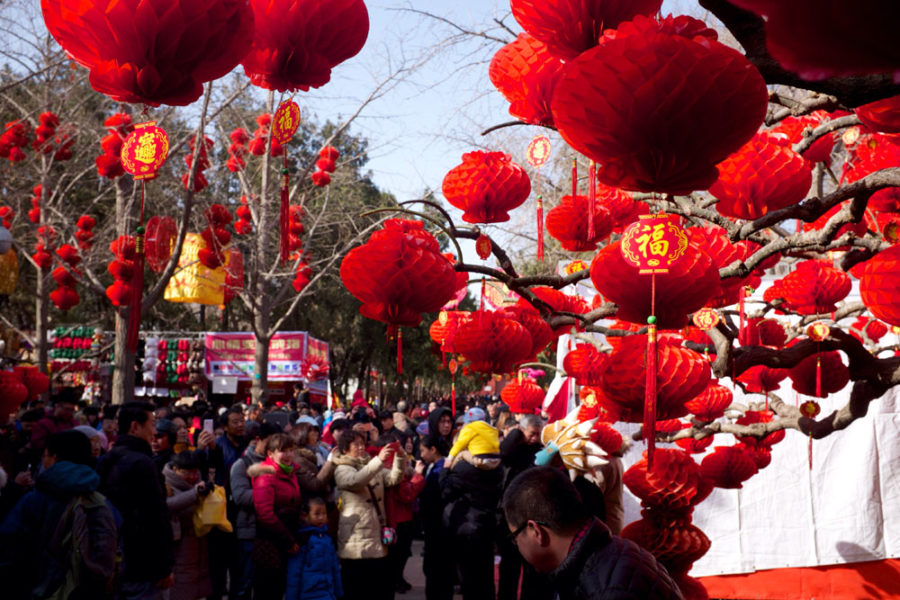Chinese New Year is one of the biggest celebrations in the world. There are twelve animals in the Chinese zodiac, starting with the Rat, including the highly auspicious Dragon and finishing with the Pig. I’m an Ox, which next comes around in early 2021.
Here in Beijing, in the last few weeks, red lanterns have been hung in the streets, red banners are hung in doorways-whether modern hotels or small courtyards- with auspicious messages, employers are preparing “red envelopes” (tips) for their staff and families for their children (although lots of people use apps on their smart phones now, not a real red envelope). All this red really brightens up the cold, dry winter city.
It’s also the most important time in China for family reunions. Getting tickets or a ride at Chinese New Year is a big challenge. Across China, airports, railway stations, roads and boats are at their busiest. Last year, there were nearly 3 billion journeys at Chinese New Year, that’s an outward and return journey for almost every person in China.
But it’s worth it to get home and enjoy fish (symbolising prosperity), dumplings (wealth), sweet rice balls (family togetherness) and noodles (long life). And after all that feasting, lots of people will be turning on the TV for the “New Year Gala” and enjoying colourful firework displays (gunpowder was invented in China) lighting up the dark sky and celebratory bursts of firecrackers (which also scare away the evil spirits of last year).
Chinese New Year is noisy, colourful, warm and fun. The celebrations vary in different places.
I had my first Chinese New Year celebration in China in 1987 (as the Rabbit took over from the Tiger). I was living in Wuhan, in central China, at the time, and colleagues invited me to share noodles with them at home before I headed off on my own new year train trip to Xian, China’s ancient capital (and famous then, as now, for the terracotta warriors, unearthed in 1974). It was cold, and we bundled up in padded coats (they were mostly blue or green then), hats and gloves and ate noodles from a street vendor there too.
I’ve spent lots of New Years in China since then, watching the holiday become more colourful, more commercial and noisier. The decorations are more elaborate, the lights brighter, the gifts a bit bigger and more people travel. But it’s still a time for families to get together and wish each other well in the year ahead. I’ll be in Beijing this year, and am looking forward to exploring some of the temple fairs, joining other Beijingers sampling the food, snapping selfies, watching lion and dragon dances, stamping our feet to keep warm. I’ll be looking out for the delicate blown-sugar decorations perched on sticks and the colourful “tanghulu” candied hawthorn berries on sticks.
The Year of the Rooster will see us celebrating the 45th anniversary of UK China relations at Ambassadorial level. I might say: “we have much to crow about”! In 2015, we welcomed President Xi Jinping to the UK for a state visit; in 2016, the Prime Minister came to China for the G20 summit in Hangzhou and she plans to return to China in 2017. In 2016, across China, we celebrated the 400th anniversary of Shakespeare and the RAF Red Arrows showcased their skills and technology. The UK-China relationship reaches back in to history and forward to the future. It is a great demonstration of the UK’s global outlook in a period of significant change, from Brexit to the US setting out on a new course. Against this background, we are working with China to find solutions to global challenges, build economies of the future and develop strong trade and people to people ties.
Happy Chinese New Year! Chun jie kuai le.

